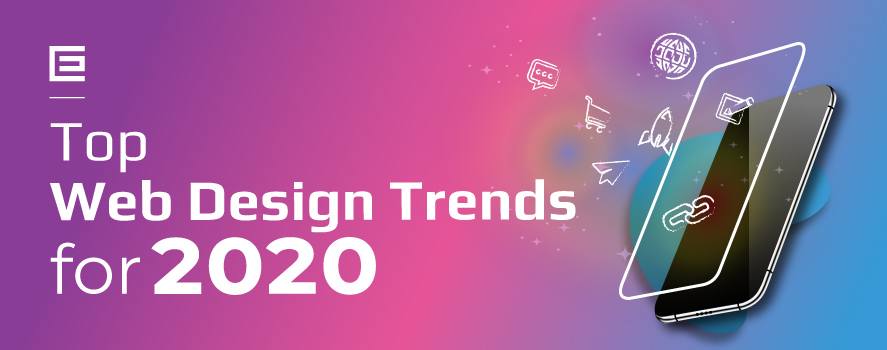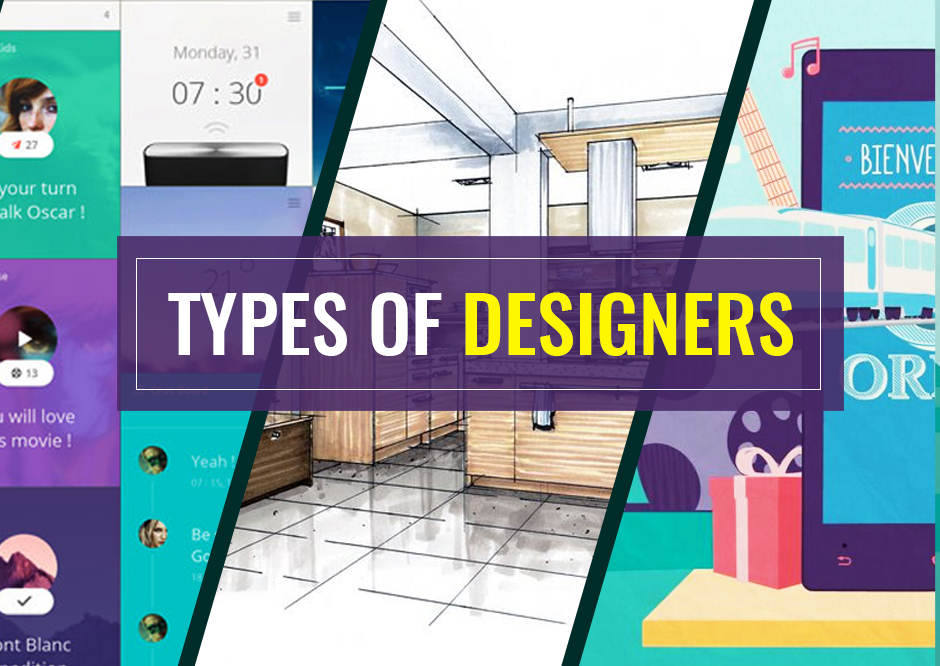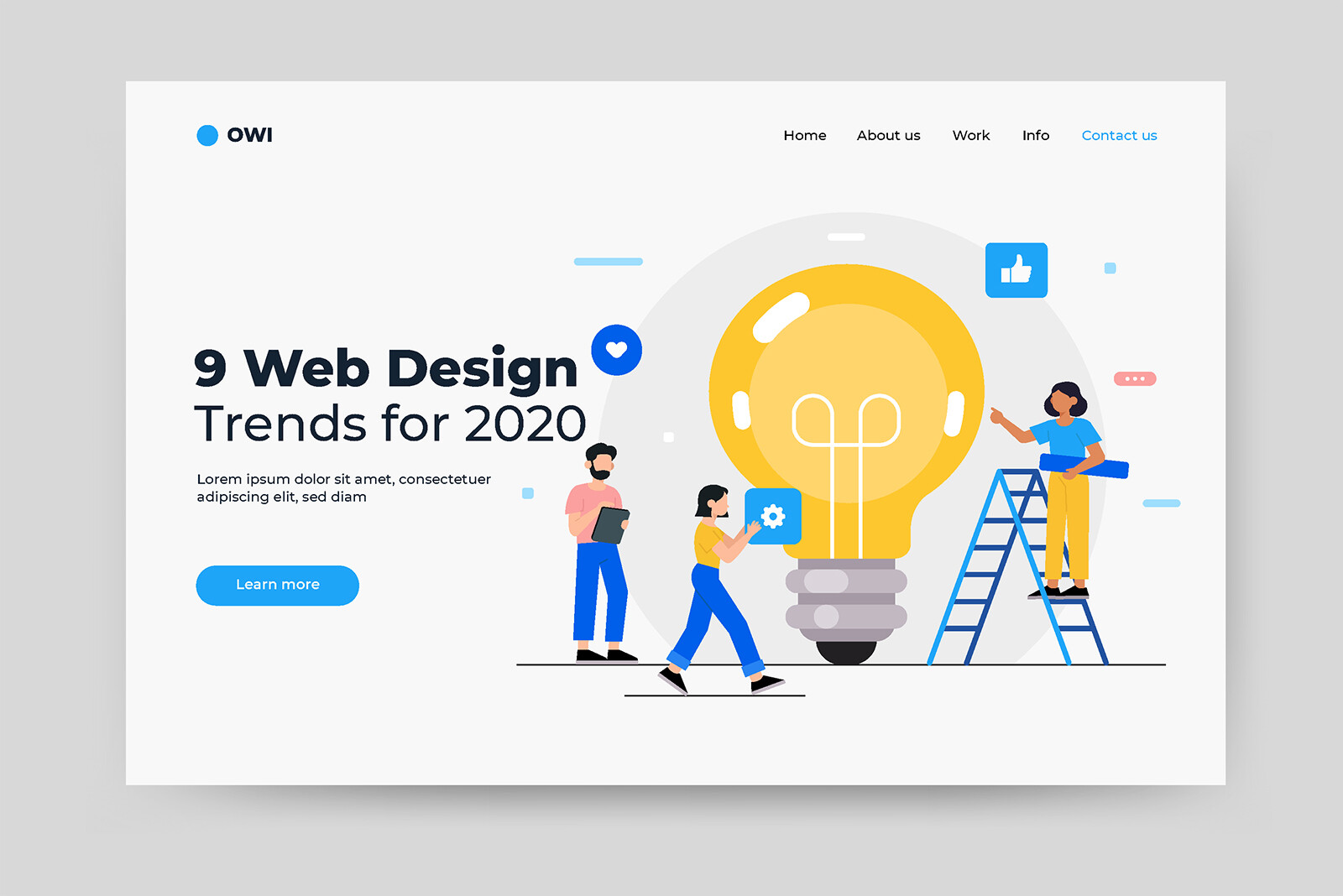2020 Website Design Inspiration: 12 Responsive Ux Design ... Fundamentals Explained
Style patterns posts resemble art directors almost directing your hands on the mouse. This year, we're doing trends various, by concentrating on what really matters. From availability to truth, no-code to function, these are the website design patterns to concentrate on if your definition of appeal consists of functionality, ease of access, and psychological security.
Now what? Function is not identity Each year, I share my take on the website design patterns that will form the coming year, often including the viewpoints of my fellow designers at Webflow, in addition to those of well-known names in the broader style community. I have actually constantly included a mix of concrete design information and interaction models as well as higher-level ideas, which assisted submit my self-imposed restraint of including one more pattern than the variety of the year (19 website design patterns for 2018, for instance).

Since 2020 is going to be a different year for design, to my mind (web designer). A year when we're all going to focus a little less on this layout, that color pattern, and whichever cool animation mode captured our eye last week, and instead consider the much deeper underlying concerns of style.
To ask much more significant questions like: How do we create to make info clear, while still making it quickly consumable? How do we make design universal, ensuring that nobody feels left out or removed by our decisions? And, maybe most considerably, how will a new generation of tools, constructed upon a paradigm that's at the same time new, yet old as spreadsheets, modification not just the way we work, however likewise what we produce? But more on that last point later.
The major social media platforms have each brought out policies and in many cases, styles to account for this new thriving of untruths. Facebook has chosen that it simply will not step in with political untruths. To support its position, the platform has cited everything from the First Amendment to the FCC's similar position on political marketing on the TV.

Facebook's been (apparently) trying to combat fake news on its platform considering that 2015, doing so in classic Silicon Valley iterative design style. It first attempted to motivate specific users to flag material as "false news" an odd half-borrowing from President Trump then by marking some stories as "contested" which, according to what it called "scholastic" research, backfired by strengthening some users' belief in the content then, most just recently overlaying the material with a straightforward notification reading: False Information Examined by independent fact-checkers.
The 5-Minute Rule for 6 Web Design Trends You Must Know For 2015 & 2016

At present, there's still no strategy to flag paid political posts as incorrect. One intriguing thing to note is that Facebook began trying to remedy sharing of false details only after it was shared the original poster was given no alerts to the truth that the material they wished to share was contested.
This strategy focuses on motivating what we call "interest clicks." This motivates engagement with the details, but that's also its defect: you have to care enough that there's "additional reporting" to click through. As a material designer, I have to question if it wouldn't be more reliable to call the truth checkers and pull a considerable quote on the material.
Twitter has actually taken a rather more straightforward (and cheerworthy) position of merely prohibiting political marketing on its platform. Though as many individuals have actually commented, it's simply not that easy. All kinds of false information "earns" its way into our feeds daily, a truth that Twitter appears to have actually done little to absolutely nothing to address.
Here are a couple of ideas on doing that: In a 2016 report on a Stanford study of students' ability to identify the veracity of info found online, the Wall Street Journal mentioned: Some 82% of middle-schoolers could not distinguish in between an advertisement labeled "sponsored material" and a genuine newspaper article on a website, according to a Stanford University study of 7,804 trainees from middle school through college.
Just look at the name: "sponsored material." On a content-driven site, that merely suggests that the material was "sponsored" by someone, much as race vehicle chauffeurs are sponsored by numerous corporations. The truth, obviously, is that these are ads, even if they're not as direct as banners. And we need to label them as such.
Https://www.google.com/maps/d/u/0/viewer?mid=18goHSsy3KjJNCKucUETaozGfWgO5FGGs&ll=34.00621766219352%2C-81.02471649999995&z=9
Our design work could use some improvements too. Simply look at the screenshot above (taken on Dec 3, 2019). Every single story because shot is a piece of sponsored content, hosted on a different site, but seamlessly integrated into Slate's own homepage. The title font for the native news posts and the sponsored stories is the very same.
Magento Web Design - Magento Designers - Magento ... - An Overview
You absolutely still see the title first, however the author name weeps out for your attention in these genuine stories. The sponsored posts, on the other hand? The "author" or brand, actually is set much smaller sized. The truth that the "author" is listed as a brand, rather than as a private writing for the brand name, is informing too: While we have someone to follow up with (or blame or praise) for real reporting, the sponsored stories are credited to faceless brand names.

The sponsored stories? Unusually doing not have that prominent header. Worldwide of journalism, you'll often hear the mantra: Think about the source - website design columbia sc. Which is not something most students do these days, according to the study: Numerous students evaluated the trustworthiness of newsy tweets based upon just how much detail they contained or whether a big image was connected, instead of on the source.
What if, for instance, every company's Twitter profile included a link to their Wikipedia page, or a Google search of their name? What if publications included an about page that clarified their political position, history, management, and financing sources? One better: what if they connected to independent analysts on the publication? These, obviously, are just concepts if absolutely nothing else, triggers to consider more deeply how we might encourage readers to act more like journalists and consider their sources in a more objective way.
Lastly, and to bring this closer to home for web designers crafting publishing experiences (that is, any designer who works on a website with a blog, case research studies, and so on): think about making your authors and their credentials a lot more apparent in your content-driven experiences. This can not just improve your website's trustworthiness and offer readers a point of contact, but also arm readers to much better evaluate your authors' content.
Associated content a familiar content pattern often appearing in the center or at the end of post and news articles, typically under a heading like "You might also like" offers designers an effective tool for including quickly accessible subtlety to a reader's understanding of a subject. How? By making sure 2 things: That opinion pieces are contextualized by the stories they comment on, or by contrasting viewpoints That news stories get additional color through the viewpoint pieces through the pieces that comment on them Using associated content to supply extra context on truth- and opinion-based pieces assists work against our age's significantly obvious choice for "bite-sized" info.
When we rely exclusively on our preferred "influencers'" hot-takes on Twitter, we begin to look a lot like a pitchfork-and-torch wielding mob, all too all set to take one charismatic voice for the font style of truth. But the more that content developers and designers can point readers to additional info and contrasting opinions, the more we can motivate nuanced understandings that rely more on information and factor than on emotion.
Fascination About Best Ecommerce Websites: 22 Winning Designs - Bigcommerce
Misinformation is not like a plumbing problem you repair. It is a social condition, like criminal offense, that you must continuously monitor and get used to. Since as far back as the period of radio and before, as Winston Churchill stated, 'A lie can go around the world prior to the reality gets its trousers on.' Which is to state: if you wish to contribute in combating false information in 2020, get ready for the long run, and be all set to update your techniques and methods as the info landscape continues to change.

However we have actually recently hired two accessibility specialists and formed a team around the effort to make availability a first-class resident in Webflow. Stay tuned for more on that. Web ease of access the practice of guaranteeing that websites and web applications are functional by everyone, despite their abilities has actually long been an essential part of the web design and development procedure in fully grown organizations.
But with high-profile cases like the Domino's lawsuit and others gaining broad notification, the writing is on the wall: soon, all websites will be needed to meet ADA requirements making ease of access a compliance problem, not simply a "great to have." And while I do not desire to overplay the impact this will have on our profession as numerous relatively minor interventions in our procedures and skillsets will have significant effect on the availability of our items I don't believe we can afford to underplay this truth either.
Do not believe me? Take a look at Vox's availability list, which outlines the methods every web professional, from designers to QAs to editors, can add to building more available websites and applications. web designer. But the work of availability needs even more than checklists and automated checks by means of browser plugins. Because much of the work of accessible site style can't be examined through software application.
If we produce videos for the web, we require to think about captioning, transcripts, and other non-visual equivalents we can provide (web design columbia sc). If we host podcasts, we'll need to think of how we can make our content readily available to those with low or non-existent hearing. If we release infographics and charts, we'll require to consider how we can make the content of these mediums available to those who can't see them.
We'll have to believe long and hard about the constraints of visual formats not just for the in a different way abled, but for those for whom visuals aren't almost as transparently readable as they are to designers (myself included!). Blind spots abound in the design process, and these holes are typically based on our disciplines.
Best Ecommerce Websites: 22 Winning Designs - Bigcommerce Things To Know Before You Buy

( Even the turn of expression I opened this paragraph with could be seen as ableist.) Designers, likewise, tend to neglect the worth and power of a single sentence, particularly when combined with an equally effective visual. The truth is: we discovered our skills in a context that presumed there was such a thing as a "typical." That you might use your skills to interact to "everyone" in your preferred format because "many people" can process your favored format simply fine.
But the truth is that is much as 26% of the United States' population experiences some type of special needs, according to the Centers for Illness Control and Prevention (CDC). web designer. And as Microsoft has actually so eloquently interacted via their inclusive design content, 100% of the population might experience momentary or situational specials needs.

There is no health; physicians say that weAt best delight in however a neutrality. John Donne, "An Anatomy of the World," 1611 The world (and its advertising) might turn around the healthy and young, but we can no longer manage to design entirely for them. I've been a material professional working on the web considering that 2006, and in those (nearly) 14 years, one dispute has defined my experience of the occupation: Does style or material precede? This so-called argument has actually never ever failed to flummox me, for several factors.
Due to the fact that, otherwise, there's actually nothing to style. On the other hand, this debate is puzzling and frustrating because, in reality, it's not even the genuine concern. Neither material nor design come first. Since you actually can't produce material or design till you have a technique. And you can't have a technique till you have a goal: a function that the important things you desire to publish need to fulfill.
Before you can design a book, you need a book to style. And before you can compose a book, you need a point: a concept or truth that you want to convey to your audience. It is very important to point out here that a website is not, in reality, a book.
get more info